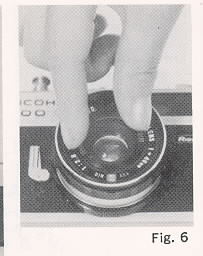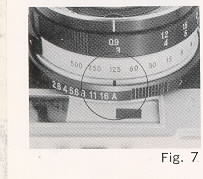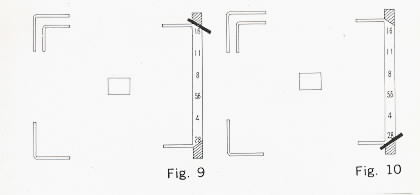Ricoh 500G
This camera manual library is for reference
and historical
purposes, all rights reserved.
This page is copyright© by  ,
M. Butkus, NJ.
,
M. Butkus, NJ.
This page may not be sold or distributed without the
expressed
permission of the producer
On-line camera manual library
If you find this manual
useful,
how about a donation of $3 to:
M. Butkus, 29 Lake Ave.,
High Bridge, NJ 08829-1701
and send your
e-mail address
so I can thank you.
Most other places would charge
you $7.50 for a electronic copy
or $18.00 for a hard to read Xerox copy.
This will help me to continue to host this site,
buy new manuals,
and pay their shipping costs.
It'll make you feel better, won't
it ?
If you use Pay Pal, use the link below.
Use the above address for a check, M.O. or cash.
Back to my main
camera manual page
CLICK HERE TO CONTINUE TO
RICOH 500G ENGLISH DIRECT PDF SCAN
RICOH 500 G Bedienungsanleitung
RICOH 500 G mode d'emploi
RICOH 500 G instrucciones para el uso
RICOH 500 G istruzioni per l'uso
Click here for Ricoh 500G PDF
made from HTML
version below

Features you'll like
· Compact and light weight: Ricoh 500G is so small that you can carry it in
your pocket with ease. Nevertheless it's a GREAT camera with up-to date features
packed.
· Electric eye: The built-in CdS electric eye automatically sets correct lens
opening for optimum result at any time. Also manual lens-opening setting is
possible if you so desire.
· Coupled Rangeflnder: Just bring two images together for a crisp, detailed
photo. The parallax correction mark will help to prevent an accidental cropping
of subject.
· Single-stroke Film wind lever: One motion advances film, winds the shutter,
counts exposure and prevents double exposure.
·Sharp, fast Rikenon f2.8 40mm lens: Always assures you of corner-to-corner
sharp photos.
· Built-in self-timer: Lets you get yourself into your photo.
· Hot shoe: The direct-contact type accessory shoe enables you to use
direct-contact type flash unit electronic flash unit without difficulty..
Principal Parts
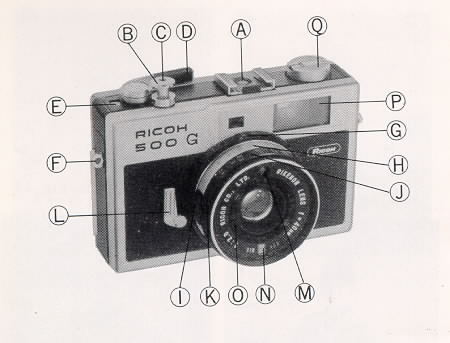
|
A. Direct-Contact Accessory Shoe
B. Shutter Release Button
C. Cable Release Socket
D. Film Wind Lever
E. Film Counter
F. Eyelet (2)
G. Auto/Manual Ring
H. Shutter Speed Ring
1. Shutter Speed Knob (2)
J. Distance Scale
|
K. Focusing Ring
L. Self-timer Lever
M. Electric Eye
N. Film Speed Window
Q Film Speed Selector
P. Rangeflnder
Q. Film Rewind Knob
|
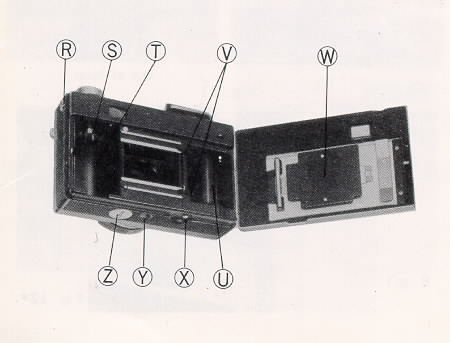
|
R. Flash Synchronization Socket
S. Film Rewind Spindle
T. Film Chamber
U. Film Take-up Spool
V. Sprocket Teeth
|
W. Film Pressure Plate
X. Film Rewind Button
Y. Tripod Screw
Z. Electric-eye Battery Chamber
|
Film loading

|
Always camera in shade, never in bright or direct sunlight.
Pull Film Rewind Knob (Q) up until camera back clicks open (Fig. 1). Swing
open camera back and place film cartridge into Film Chamber (T) and push Film
Rewind Knob back to its original position (Fig. 2) . . . be certain Film Rewind
Spindle (S) engages film cartridge.
|
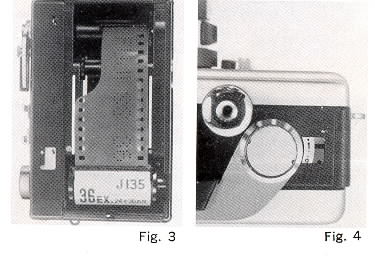 |
Pull tapered end of film across back of
camera and insert into and through the slit of Film Take-up Spool (U) (Fig. 3). Rotate Film Take-up Spool (U) in direction of are row to take up film
slack . . . check to see that sprocket holes in film have engaged both sets of Sprocket Teeth (V).
Close the camera teach and snap it shut. Advance Film Wind Lever (D)
twice, depressing Shutter Release Button (B) each time. Advance Film Wind Lever once more and Film Counter (E) will be automatically set to "1",
ready for your first picture (Fig. 4) |
Correct exposure
Open Electric-eye Battery Chamber (Z)
with a coin by turning the cover counterclockwise, put a
mercury battery
with the plus "+" side up and replace the cover (Fig 5). The mercury battery
is the power source for the electric-eye and will last for a year
approximately. For replacement use 1.35v type Eveready EPX 675, Mallory,
PX675 or equivalent.
See this link on a Wein Air replacement battery. |

|
(Webmaster: this is a mercury battery, not available for sale in the U.S.
Check my web page for
Mercury Battery Replacements. There are several options.
To set the exposure meter for the film you are using, turn Film Speed
Selector (O) either to the left or right until the same film speed number as
your film appears in Film Speed Window (N) (Fig. 6). Check the instruction sheet
packaged with your film for the correct film speed setting. Next set Auto/Manual
Ring (G) at "A" (Auto). Your camera is now set for automatic exposure control
(Fig. 7).
Manual override
If you want to operate your camera manually, you can do so. Simply rotate
Auto/Manual Ring (G) and set the desired lens opening number at red marker. The
instance you rotate Auto/Manual Ring (G) off "A" (Auto), the letter "M" will
appear in the viewfinder indicating your camera is set for manual use.
Setting shutter speed
| Lightly hold Shutter Speed Knobs (I) and
rotate Shutter Speed Ring (H) until the desired shutter speed comes opposite
red marker (Fig. 8). The Shutter speed setting governs the amount of time
the film is exposed to light. '60" (1/60 second) is recommended for subject
not in motion. Where motion exists, a shutter speed ranging from 1/125 to
1/500 should be used. |
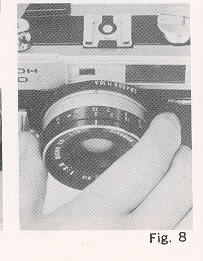
|
Look into the viewfinder and you will observe two red zones, one at the upper
right-hand corner and the other lower right-hand corner, and lens opening
numbers in between. The upper red zone is warning mark for overexposure. If the
exposure meter needle is in the red warning mark, set Shutter Speed Ring (H) at
faster speed (Fig. 9). If you find the needle in the lower red warning mark, use
slower shutter speed (Fig. 10). If the needle stays on or between numbers, this
is correct exposure and the number, such as 2.8 or 4 or 5.6. . . indicated by
the needle tells you the lens opening at which you are going to make exposure.
Viewing and focusing
Look into viewfinder to compose your picture and focus the lens. Rotate
Focusing Ring (K) until the double image in the rangeflnder (center of
viewfinder), has merged to a single image (Fig. 11). . . your subject will now
be in sharp focus.
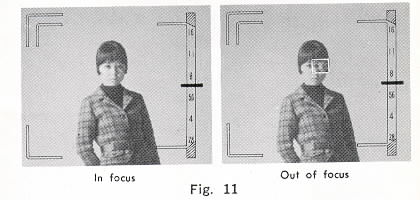
When composing your picture, keep your subject within the bright-frame
outline of the viewfinder.. When you shoot a close-up, keep your subject within
the inner bright-frame so that your subject may not be cropped. To take the
picture, hold the camera either vertically or horizontally as steady as you can
and press Shutter Release Button (B) slowly and smoothly all the way down.
Flash pictures
Your camera has synchronization designed to permit flash pictures with flash
bulbs and also electronic flash. You may use a flash gun or electronic flash.
The flash gun attaches to the Direct-Contact Accessory Shoe (A) of your
camera. If your flash unit has no direct contact, the flash connecting cord of
the flash gun should be attached to Flash synchronization Socket (R) of your
camera.
For No. 5, 5B, 25, 25B, M5, M5B, M2, M2B, AG1, AG1B Flash bulbs shutter
speeds from 1/30 through 1/125 second may be used.
For Electronic Flash any shutter speeds from 1/8 through 1/500 second could
be used. However, the shutter speeds ranging from 1/60 up to 1/500 second are
recommended for better flash picture.
(Webmaster: this is a leaf shutter, meaning at any instant all of the film
is exposed at any given shutter speed. So this camera can have shutter
speeds above the 1/30 to 1/125 sec of normal 35mm cameras.)
Setting the lens for flash pictures
To determine the lens opening, divide the distance in feet (or meter) from
flash to subject into the flash bulb guide number for the film used. Check the
chart on the flash bulb carton for the guide number.
EXAMPLE: Flash Bulb Guide Number: 66ft.
Flash-to-subject distance: 6ft.
66 divided by 6 = 11; use lens opening f:11
Rotate Auto/Manual Ring (G) off "A" (Auto) and set the obtained lens opening number at red marker.
(Webmaster: most current flash units are "automatic", you set the camera to it's "flash" or "sync" speed, which on this camera is 1/500 sec. [ most are
1/60 ], check the back of the flash unit you will use and it will have a chart.
Depending on the ASA of the film, the flash will show an F-stop to set the lens diaphragm to. The flash will also show you the range in distance you can
photograph. This is usually 4 feet to some 15 feet or more. Some flash units have two or three F-stops to choose from. Depending on the
power (size) of the flash, that determines the F-stop and longest distance from your subject.)
The self-timer
By using the Self timer, you can also get into the picture. Merely move the
Self-timer Lever (L) away from the lens. When you press Shutter Release Button,
there will be about 8-second delay before the Self-timer automatically releases
the shutter. Camera should be placed on tripod or other sturdy support.
Unloading film
Always unload your camera in the shade, never in bright light.
After the last picture on the roll has been taken, press Film Rewind Button (X). Lift up crank on Film Rewind Knob (Q) and rotate crank clockwise until the
entire roll of film has been rewound . . . tension on the crank will decrease noticeably (Fig. 12).
Open the camera back, pull up the Film Rewind Knob and remove the film cartridge. Push Film Rewind Knob down all the way and return crank to closed
position.
Tips for better pictures
· Read the instruction booklet carefully.
· Before you go on a trip or photograph a special event shoot a practice roll of film.
· Keep fingers and strap clear of the camera lens and electric eye.
· When you reach the end of the roll of film (check Film Counter), the Film Wind Lever becomes harder to advance . . . don't try for " just one more shot".
It's time to rewind.
· When the camera is not in use, set Shutter Speed Ring at "B" (bulb) and protect lens with lens cap, which will prevent unnecessary consumption of
exposure meter battery.
· Protect your camera from dust, dirt and rough handling - do not expose camera or film to excessively high temperatures such as in a closed automobile
under a hot sun.






